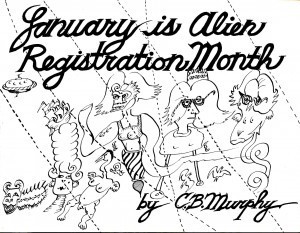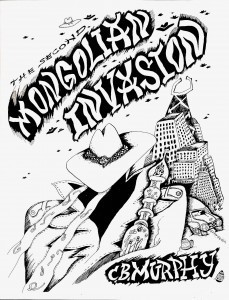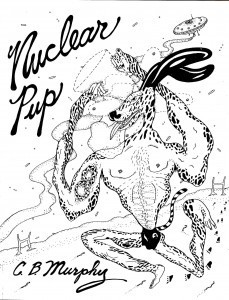History of Zoographico Press
 In ancient times, before personal computers and print-on-demand (POD) publishing, there was a phenomenon called “artists books.” These were often handmade books (sometimes by “famous” painters, etc.) and zines made by punks (whatever). Finding them and buying them was tough. Sometimes they were sold in “head shops” or were given a small space in a comic book store. A version of them (the upper class version you might say) ended up in museums, sometimes in exhibitions and sometimes in museum gift shops. I was always attracted to the idea of an artist book. Sure “underground comics” existed and you could buy them at the larger urban magazine stores which have largely disappeared. R. Crumb et al. And there was RAW magazine, a wonderful quirky thing run by Art Spiegelman (of “Maus” fame), that showcased all kinds of narrative and non-narrative “comics.” The narratives have grown up into a real market we now call graphic novels. This is a good thing, but a different thing than the earlier free for all of forms.
In ancient times, before personal computers and print-on-demand (POD) publishing, there was a phenomenon called “artists books.” These were often handmade books (sometimes by “famous” painters, etc.) and zines made by punks (whatever). Finding them and buying them was tough. Sometimes they were sold in “head shops” or were given a small space in a comic book store. A version of them (the upper class version you might say) ended up in museums, sometimes in exhibitions and sometimes in museum gift shops. I was always attracted to the idea of an artist book. Sure “underground comics” existed and you could buy them at the larger urban magazine stores which have largely disappeared. R. Crumb et al. And there was RAW magazine, a wonderful quirky thing run by Art Spiegelman (of “Maus” fame), that showcased all kinds of narrative and non-narrative “comics.” The narratives have grown up into a real market we now call graphic novels. This is a good thing, but a different thing than the earlier free for all of forms.
My first Zoographico Press book was a collection of drawings called “January is Alien Registration Month.” This was long before immigration reform made ‘alien’ a controversial term. At this time, I came across the phrase and thought how odd that the US government would expect aliens (illegal immigrants or “little green men”) to register. Where and why? Many of the drawings, such as the ceiling of the Grande Ballroom (Detroit, MI) presaged the whole “decline of Detroit” (or “ruin porn“) that has become popular, especially in France.
My second Zoographico Press book was a fractured attempt (in the sense of Rocky and Bullwinkle’s Fractured Fairy Tales) to create a narrative character. The best I could do was draw a series of vignettes “from the life of” my character who really did have a backstory. He was an irradiated Harlequin Great Dane, anthropomorphized into a creature who impersonated people like James Bond. Don’t ask. The real focus was the drawing style inspired by the Chicago Imagists and the “Hairy Who” painters including Jim Nutt and Roger Brown.
 The “Nuclear Pup” was a roaring success in my own mind. And whose mind matters, eh? The third and final book in the “offset printing” trilogy was “The Second Mongolian Invasion.” This will take a bit of explanation. As a child I was a prescient diversity advocate in that I wanted to be the “indian” (Native American) in cowboys-and-indians, Tojo in WW II games and a Saracen (Muslim) in our childish reconstruction of the siege of Jerusalem. I don’t know why. Genghis Khan held particular fascination for me. The size of his empire, the ferocity of his warriors, mountains of skulls, were so amazing — why wasn’t everyone talking about them? In my childish hubris, I felt like I had rediscovered them. Fast forward to where The Second Mongolian invasion imagines these entities as magical, psychic, and an alien invading race. Postulating a world where these entities had “taken over” (think of Philip Dick‘s “The Man in the High Castle“) and were already in a sort of decadence,
The “Nuclear Pup” was a roaring success in my own mind. And whose mind matters, eh? The third and final book in the “offset printing” trilogy was “The Second Mongolian Invasion.” This will take a bit of explanation. As a child I was a prescient diversity advocate in that I wanted to be the “indian” (Native American) in cowboys-and-indians, Tojo in WW II games and a Saracen (Muslim) in our childish reconstruction of the siege of Jerusalem. I don’t know why. Genghis Khan held particular fascination for me. The size of his empire, the ferocity of his warriors, mountains of skulls, were so amazing — why wasn’t everyone talking about them? In my childish hubris, I felt like I had rediscovered them. Fast forward to where The Second Mongolian invasion imagines these entities as magical, psychic, and an alien invading race. Postulating a world where these entities had “taken over” (think of Philip Dick‘s “The Man in the High Castle“) and were already in a sort of decadence,
I tried to imagine how they might fare, what psychoses they might develop (such as the infamous “chakra flashing”).
One more word on the world of the Second Mongolians. I thought I had left it behind, but the concept is arising once again in my new novel “Bardo Zsa Zsa.” Watch for it.
Note: All books are available at Amazon.com





